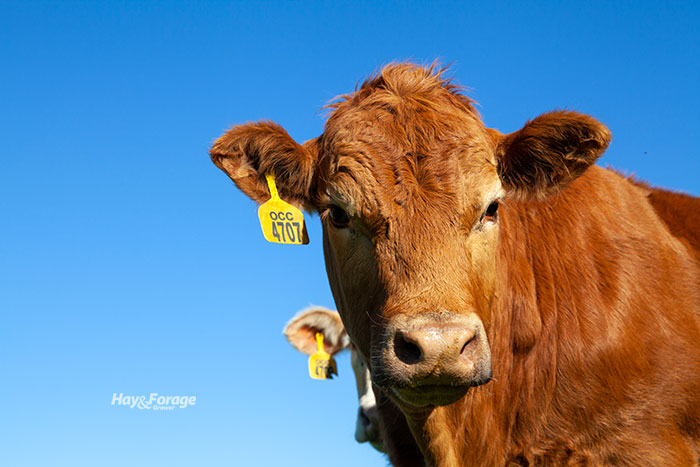
Growth in the grass-finished beef sector has grown exponentially in the past decade. The desire for local foods by more consumers and the pandemic added a giant nudge to the grass-finished growth curve.
Some beef producers have experienced resounding success and profitability in the grass-finished beef space. Others have not or are still in an adjustment period. To be sure, raising grass-finished beef is not the same as taking care of a cow-calf herd. Maintenance isn’t good enough — you need growth, and fast.
Gary Bates, the director of the University of Tennessee’s Beef and Forage Center, offers three important tips for farmers who have or want to develop a grass-finished beef enterprise. They are:
1. Minimize the use of Kentucky 31 (KY-31) tall fescue. The endophyte in KY-31 tall fescue produces alkaloids that negatively affect grazing cattle, including reduced weight gain in growing calves.
“Research has shown that 500- to 600-pound steers only gain 1 pound per day on infected tall fescue compared to 2 pounds per day when on orchardgrass or nontoxic tall fescue,” Bates notes. “This is a dramatic difference if you are trying to finish cattle on pasture.”
Bates says that one of the first steps to improve cattle weight gain is to provide a nontoxic forage species for growing cattle. The list of alternatives to KY-31 includes orchardgrass, annual ryegrass, wheat, or novel endophyte tall fescue species.
2. Maintain red and white clover in every grazing pasture. Adding legumes to grass pastures will enhance calf weight gains. Legumes will boost the protein and energy content of a pasture, which will result in improved performance. Bates cites research showing that adding clovers can increase the weight gain by 0.25 to 0.5 pounds per day. He suggests seeding 2 pounds of white clover and 4 pounds of red clover per acre in late winter or early spring.
3. Provide plenty of available forage. “Grazing cattle have a remarkable ability to select a high-quality diet,” Bates asserts. “If there is enough forage available in a pasture, an animal might consume a diet that is several percentage units higher in protein and energy than the average of what is available.”
Leaves have higher energy and protein than stems, and because grazing animals prefer the leaves of grasses and legumes, letting the animals have selectivity will result in a higher quality diet and better weight gain.
“This means that you shouldn’t force animals to graze all of the forage in a pasture, but you should let them graze the high-quality portion of the plants, then move them to another field where more forage is available,” Bates says. “You can let cows come in and clean up the field that has been picked over. This principle holds true regardless of the species you are grazing,” he adds.
Producing high-quality beef on pasture requires different forage strategies than that for the cow herd. At the top of the list is to minimize the use of KY-31, utilize legumes in all pastures, and don’t overgraze or over stock a pasture to ensure plenty of available forage, which allows the animals to select a high-quality diet.

